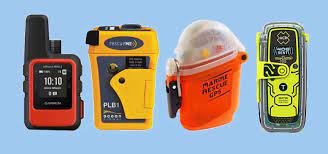Are you an avid scuba diver who loves to explore the mesmerizing underwater world? While scuba diving offers exhilarating experiences, it's essential to prioritize safety. One indispensable tool every diver should consider is a Personal Locator Beacon (PLB). In this comprehensive guide, we'll delve into the ins and outs of PLBs for scuba divers, ensuring you're well-equipped to make informed decisions about your safety.
Introduction to Scuba Diving Safety
Scuba diving is a captivating activity that allows us to explore the beauty beneath the waves. However, as with any adventure, safety should always come first. While training and equipment are crucial aspects of diving safety, modern technology has introduced additional tools like Personal Locator Beacons (PLBs) to enhance diver security.
Understanding Personal Locator Beacons (PLBs)
A Personal Locator Beacon, commonly known as a PLB, is a compact electronic device designed to transmit distress signals to search and rescue satellites in emergency situations. It's a vital tool that significantly increases your chances of being located quickly in case of unforeseen circumstances.
How does a PLB work?
When activated, a PLB sends out a distress signal via a dedicated frequency to satellites orbiting the Earth. These satellites then relay the signal to ground stations, which subsequently notify local rescue coordination centers. This efficient communication network enables swift action in locating and assisting divers in need.
The Importance of PLBs for Scuba Divers
Scuba diving involves venturing into the unknown, where conditions can change rapidly. A PLB acts as a lifeline, providing reassurance that if something goes wrong, help is just a distress signal away. Whether you're caught in a strong current or surfaced away from your dive boat, a PLB can be your savior.
Waterproof and Submersible Design
Since diving takes place underwater, it's essential that your PLB can withstand immersion. Look for PLBs with robust waterproof and submersible features, ensuring they function flawlessly even at significant depths.
GPS and Satellite Connectivity
For accurate positioning, a built-in GPS is crucial in a PLB. This feature enables rescuers to pinpoint your exact location, reducing search time and increasing the likelihood of a successful rescue.
Buoyancy and Compactness
A buoyant PLB can be a lifesaver during emergencies. Opt for a compact design that can be easily attached to your gear without hindering your movements.
Top PLBs in the Market
Several reputable brands offer PLBs designed specifically for scuba divers. Models like AquaticAlert DIVE15 and NeptuneGuard Beacon have gained popularity for their reliability and features.
Pros and Cons of Different Models
While each PLB model has its advantages, it's essential to consider factors like battery life, ease of use, and compatibility with your diving environment when making your choice.
How to Choose the Right PLB for You
Evaluate the depth and locations of your dives. If you frequently explore remote areas with limited communication, a high-quality PLB is a must.
Budget Considerations
PLBs come in a range of prices, so consider your budget and remember that this is an investment in your safety.
Activation and Deactivation Instructions
Familiarize yourself with the activation and deactivation process of your chosen PLB. Regularly review these steps to ensure you're prepared in case of an emergency.
Battery Replacement and Testing
Maintaining a functional PLB means regularly checking its battery status and ensuring it undergoes proper testing. Most PLBs have self-test functions to simplify this process.
Diver Survival Stories Thanks to PLBs
Numerous divers have shared stories of how PLBs played a pivotal role in their rescue. These real-life accounts emphasize the importance of carrying a PLB during every dive.
Addressing Concerns About PLBs
Modern PLBs are designed to minimize their impact on marine life, operating within specific frequency ranges that are less likely to disrupt underwater ecosystems.
False Alarms and Misuse
While false alarms can occur, proper education and responsible PLB usage can significantly reduce the chances of false distress signals.
Comparing PLBs with Other Safety Devices
EPIRBs vs. PLBs
Emergency Position Indicating Radio Beacons (EPIRBs) are larger versions of PLBs used in maritime distress situations. PLBs are more suitable for individual divers due to their compactness.
Dive Computers and Safety Tools
While dive computers offer valuable data, PLBs are dedicated to alerting rescue services. They complement each other, enhancing overall diving safety.
Conclusion
Scuba diving is an exhilarating adventure, but safety should never be compromised. Personal Locator Beacons provide an essential layer of security, ensuring that help is within reach even in the most challenging situations. Whether you're an experienced diver or just starting your underwater journey, investing in a high-quality PLB can make all the difference. Prioritize your safety, equip yourself with knowledge, and embark on your dives with confidence.


No comments yet